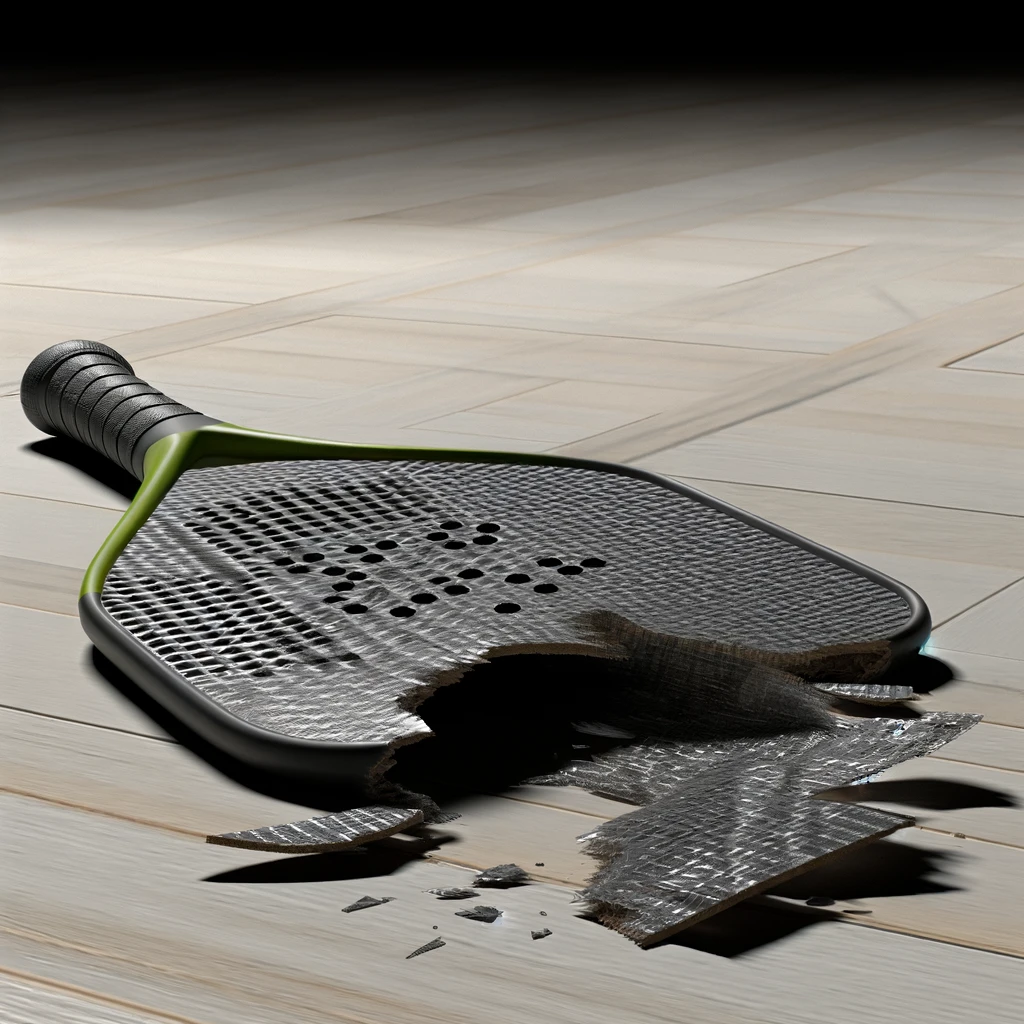What’s that saying about excuses? Excuses change nothing, but make everyone feel better.
Are you a pickleball player who’s always got an excuse ready when things don’t go your way on the court?
Do you find yourself constantly pointing fingers at your paddle, the weather, the court surface, or even the phase of the moon?
In the world of pickleball, where egos are as fragile as perforated plastic, having an arsenal of creative justifications for your failures is essential. After all, admitting that your opponent simply outplayed you is far too painful for most of us mere mortals. 🙂
Fear not, for we’ve compiled an exhaustive list of reasons you can use to deflect blame from your own shortcomings and instead pin it squarely on that trusty (or not-so-trusty) paddle of yours. It’s usually an excuse to justify the purchase of the most expensive pickleball paddles.
From weight woes to technological obsolescence, we’ve got you covered with enough excuses to make even the most seasoned of pickleball veterans blush.

So, the next time you find yourself on the wrong end of a lopsided score, simply whip out one (or several) of these gems.
Who needs to work on their game when you can simply blame everything but yourself?
Get ready to embrace the sweet, sweet sound of making excuses, because in the world of pickleball, it’s always someone else’s fault – and your paddle is the perfect scapegoat!
Weight Woes
The paddle is too heavy or too light for your playing style and strength, leading to fatigue or lack of control.
Size Struggles
The paddle face is too small or too large for your preference and control, making it difficult to execute desired shots.
Grip Grievances
The paddle has an incorrect grip size, making it uncomfortable or difficult to hold properly, affecting your grip and shot execution.
Surface Setbacks
The paddle’s surface texture is too rough or too smooth, affecting your ability to generate the desired spin and control on the ball.
Style Mismatch
The paddle’s shape or design doesn’t suit your swing mechanics or playing style, hindering your natural stroke motion.
Power Problems
The paddle’s core material (e.g., polymer or composite) doesn’t provide the desired power or touch, resulting in either overpowered or underpowered shots.
Weight Distribution Woes
The paddle’s weight distribution is unbalanced, causing inconsistent shots and lack of control.
Sweet Spot Shifts
The paddle’s edge guard (if present) is too thick or thin, altering the sweet spot and affecting shot quality.
Handle Hassles
The paddle’s handle shape or material causes discomfort or blisters, distracting you from your game. Consider pickleball gloves!
Construction Concerns
The paddle’s overall construction quality or durability is not suitable for your level of play, leading to premature wear and tear.
Dead Paddle Syndrome
The paddle is “dead” or has lost its pop/power due to overuse and compression of the core material over time, resulting in a lack of responsiveness. Pickleball paddles do wear out!

Surface Deterioration
The paddle’s surface has become too worn, losing its texture and affecting your ability to generate spin and control on the ball.
Structural Damage
Cracks or delamination have developed in the paddle face or core, impacting performance and potentially causing safety issues.
Edge Guard Erosion
The edge guard has worn down, exposing the core and altering the sweet spot, leading to inconsistent shot quality.
Grip Gone Awry
The grip has become excessively slick or sticky from heavy use and sweat exposure, making it difficult to maintain a secure hold.
Technological Obsolescence
The paddle’s design/materials are outdated and do not incorporate the latest technological advancements in pickleball paddles, putting you at a competitive disadvantage.
Material Inferiority
Newer composite cores or surface materials provide better power, control, or spin that the older paddle cannot match, hindering your performance.
Core Inadequacy
Advanced honeycomb or polymer cores in modern paddles reduce vibration/shock better than the old paddle’s core, leading to discomfort or fatigue.
Aerodynamic Shortcomings
Newer paddle shapes are more aerodynamic or better-suited for modern pickleball strokes, while your paddle may be causing drag or impeding your stroke mechanics.
Spin Deficiency
The old paddle lacks spin-promoting surface textures/patterns found on cutting-edge paddles, making it harder to generate the desired spin on the ball.
At the end of the day, we all know that making excuses is just part of the fun in pickleball. Whether you’re blaming your paddle’s outdated technology or its subpar grip, there’s something immensely satisfying about finding a scapegoat for your failings on the court.
So, the next time you find yourself on the losing end of a heated pickleball battle, don’t beat yourself up too much. Simply consult this comprehensive list, pick your excuse, and let the justifications flow like a well-placed dink shot. After all, what’s a friendly game of pickleball without a few creative cop-outs thrown in for good measure? Besides, pickleball sucks, right?!
Just remember, as you’re regaling your fellow players with tales of your paddle’s shortcomings, there’s always one tiny possibility you might want to consider: maybe, just maybe, you need to work on your game a little bit. But where’s the fun in that?
